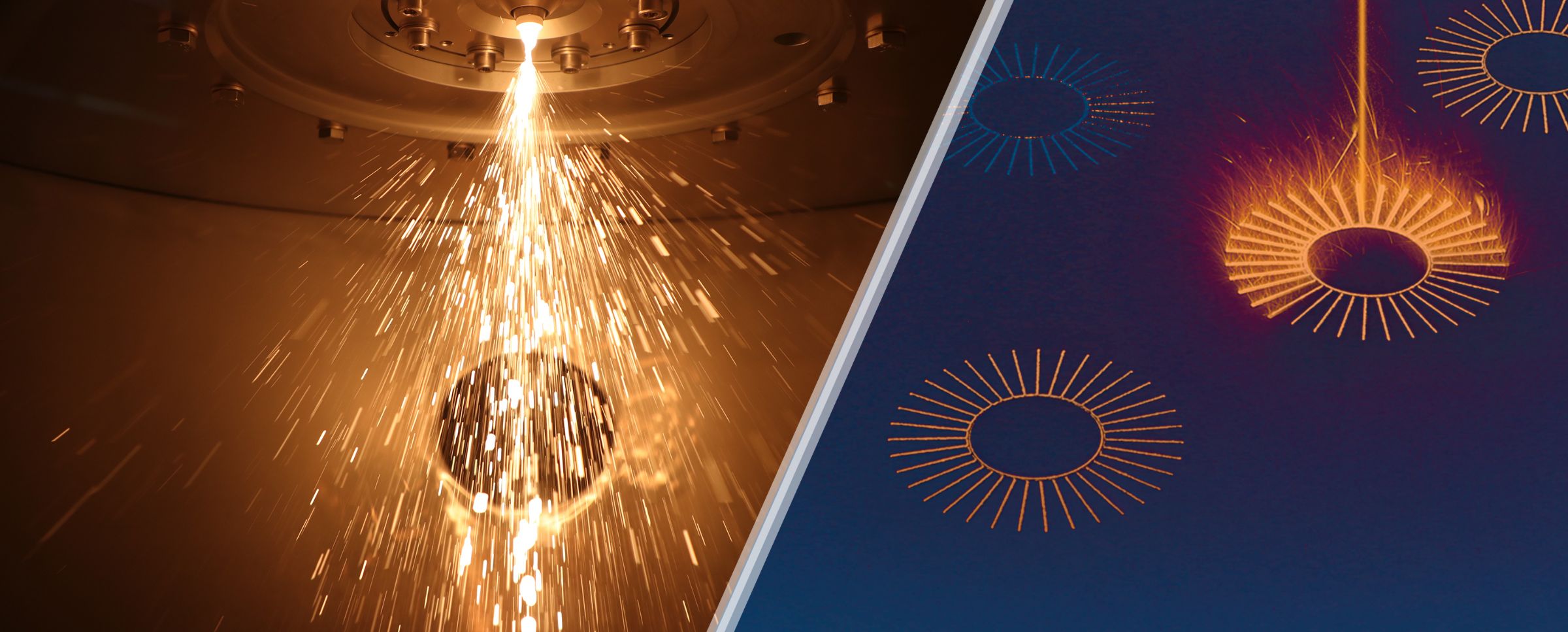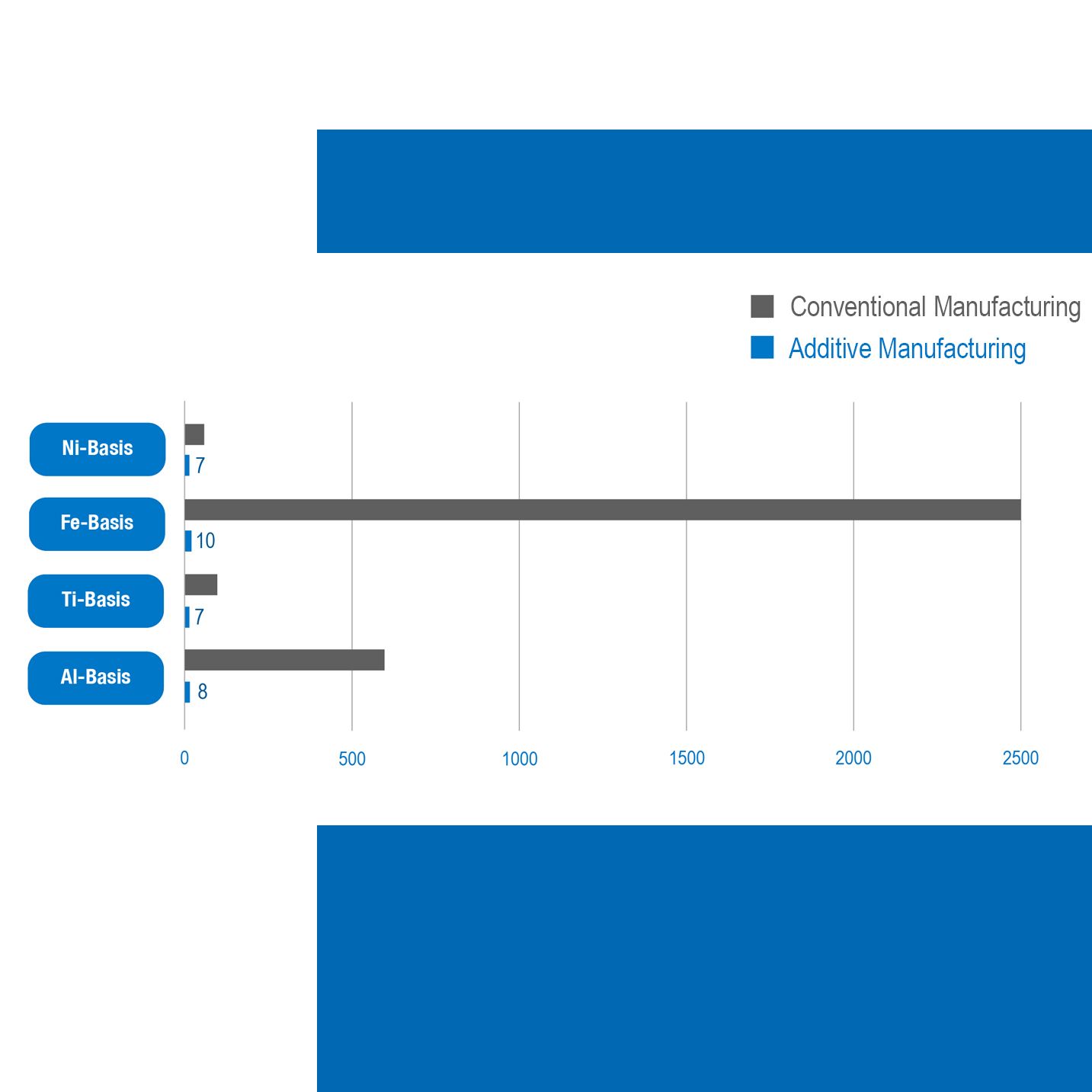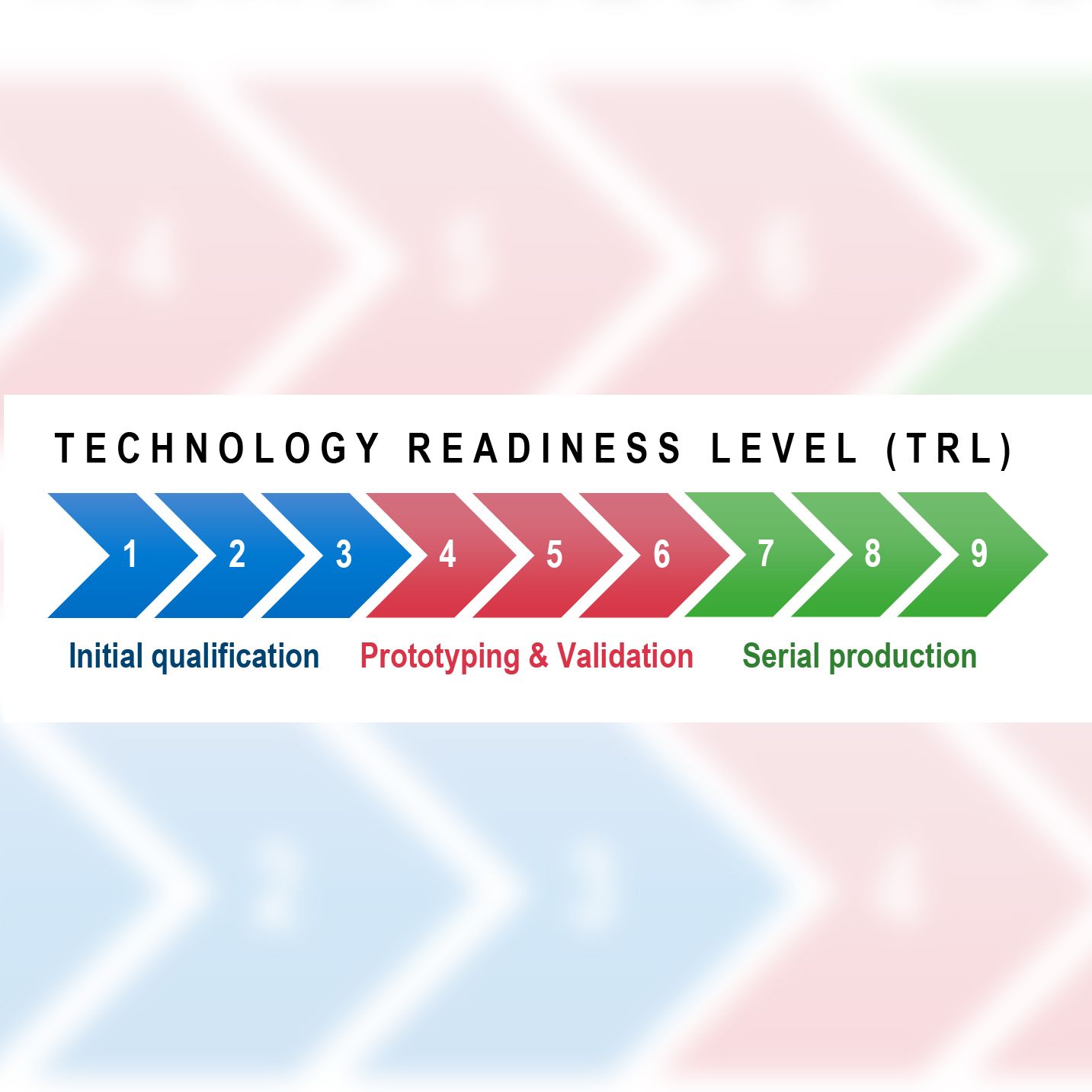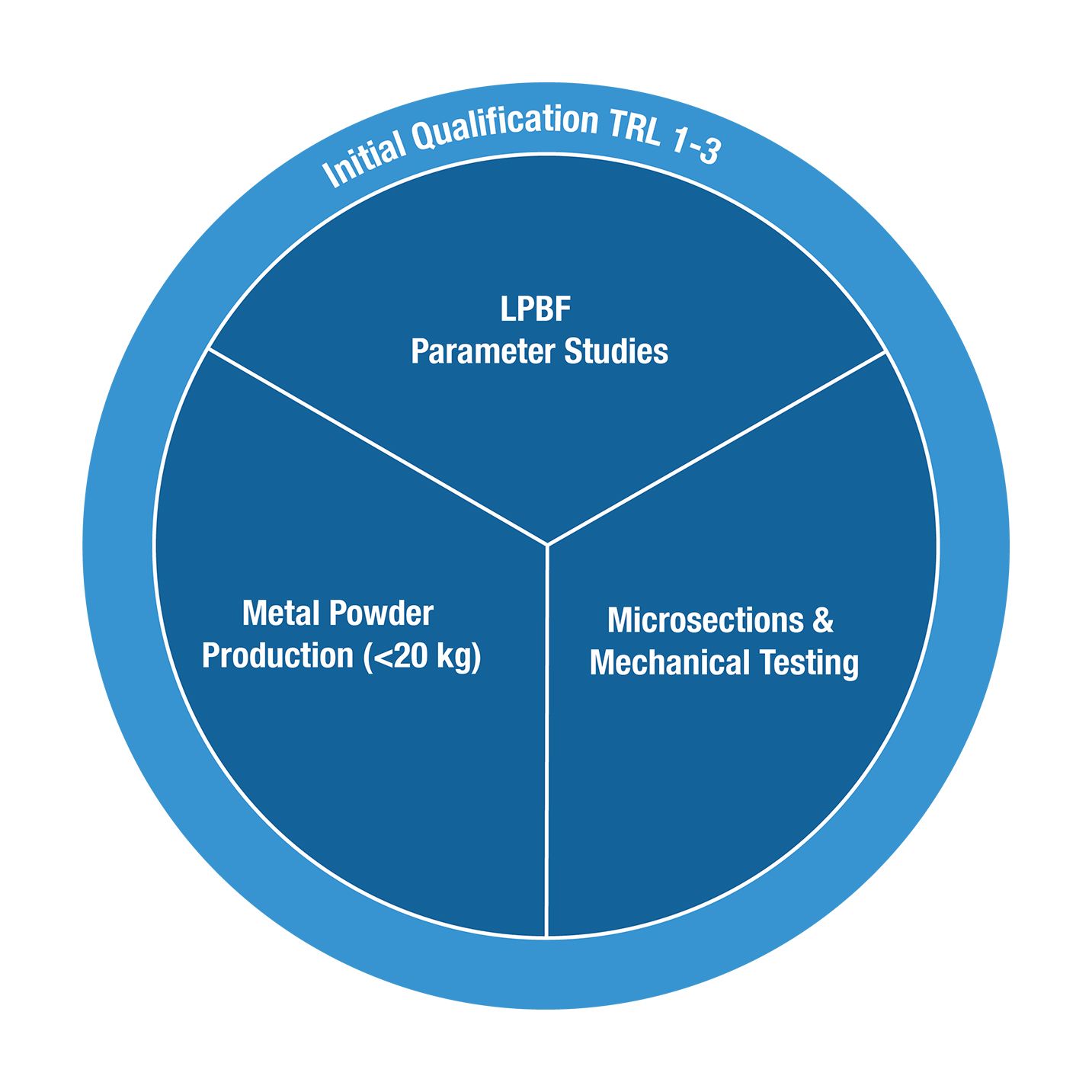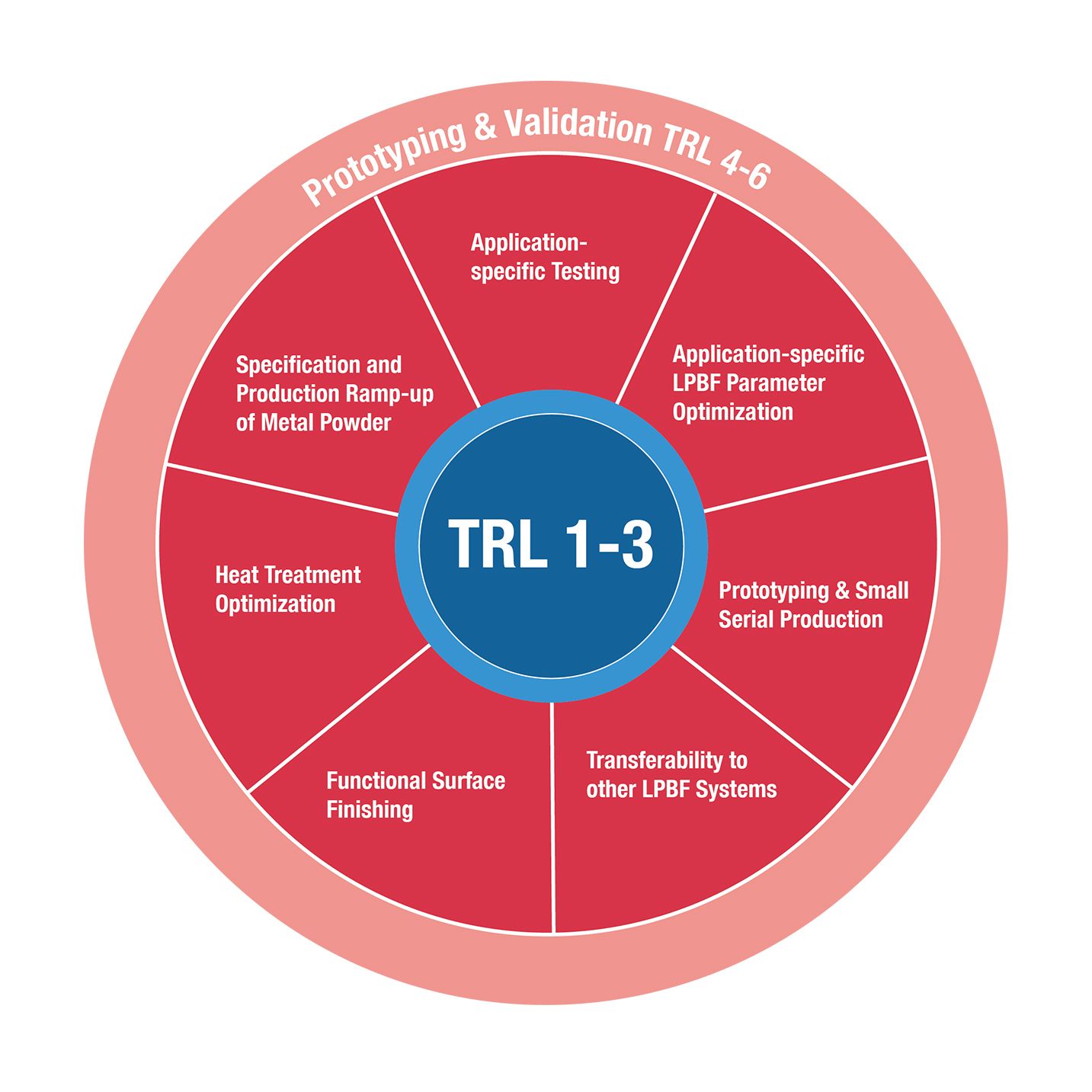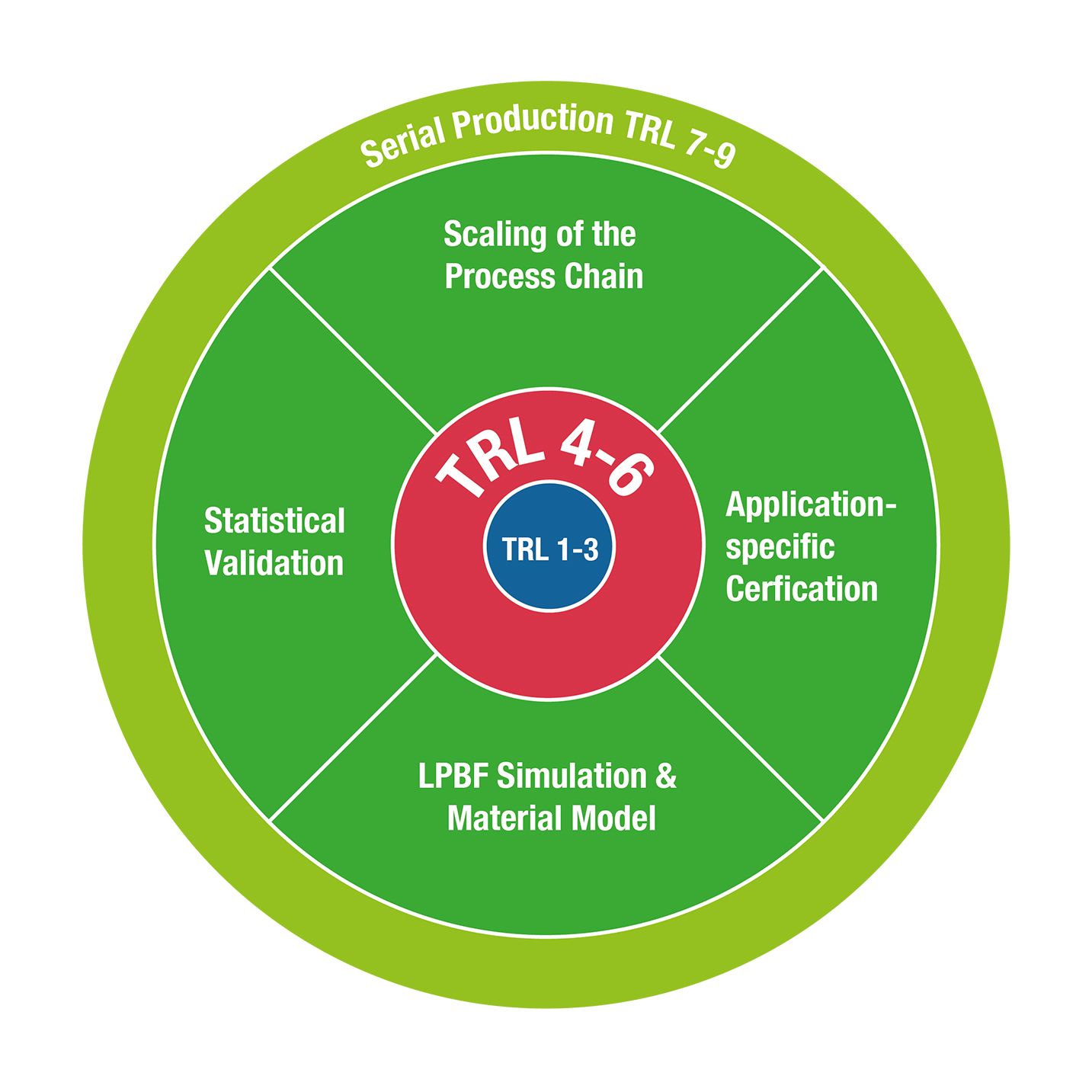Material Qualification
From over 100 years of experience in processing more than 400 different materials for the production of forged components, we know the high challenges faced by our end customers with regard to application-specific material properties.
We at Rosswag Engineering have therefore made it our goal to close the material gap between metal 3D-printing and conventional manufacturing processes. We are currently working on the qualification of new materials in dozens of industrial and research projects. We can offer our customers both well-known alloys such as the quenched and tempered steel 42CrMo4 and newly developed materials such as the high-strength maraging tool steel Specialis® for the production of components for specific applications.
Materials ready for series production
in comparison
The number of available and qualified materials for industrial metal 3D-printing is comparatively small. However, for further industrialization of the technology, the market needs a wider range of materials to enable the functional added values through additive manufacturing processes for more use cases across industries.
Technology Readiness Level
The classification according to Technology Readiness Level (TRL) helps to describe the qualification status of a material transparently in communication. With the initial qualification, first grinding results and mechanical properties, the basic processability of the material can be proven and TRL 3 is reached. Based on this, the further qualification can be advanced in the following two phases up to series maturity. In TRL 4-6 "Prototyping and Validation", application-specific optimizations and validations of the targeted process chain are carried out. In the final phase, "Serial Production", the material and process are finally optimized with extensive statistics for later series applications, and application-specific certifications for the material, the process and the component design can be tackled.
Initial Qualification
The hurdle for companies to have new materials qualified for additive manufacturing is usually very high. First, the metal powder must be produced in the required quality via a supplier. Then another partner is needed to process the material on an LPBF system and identify suitable process and machine parameters. Samples and test specimens are often analyzed and tested by a third partner. The countless interfaces involved lead to a high financial risk and a lengthy development project without a clear structure and objectives.
At Rosswag Engineering, the in-house and holistic process chain makes it possible to atomize a new material into metal powder, perform LPBF parameter studies and then determine the initial results regarding microstructure and mechanical properties in the laboratory in less than 4 weeks. According to the Technology Readiness Level (TRL) developed by NASA, the initial qualification is in the range of proof of functional capability (Level 3).
Validation & Prototyping
Once the basic process capability of the material has been demonstrated, the overall process is optimized to meet the application-specific requirements of the possible end applications. On the one hand, the focus is on post-processing from heat treatment to machining and suitable surface finishing. On the other hand, initial prototypes and test bodies are tested by means of further test series with regard to the application-specific requirements.
Transferability to other LPBF systems is also an important component in the area of Technology Readiness Level 4-6. The aim is to achieve machine-independent processability of the specified metal powder on comparable production systems by transferring the most important machine parameters and subsequent fine-tuning to the respective system characteristics.
Series Manufacturing
A production-ready material and manufacturing process is the major goal at the end of every qualification - and yet it is only the beginning. The main goal should be to establish a component-specific AM process chain. Whether series production continues to be handled by service providers such as Rosswag Engineering, or the customer wants to bring additive manufacturing in-house as a key technology, is decided on a customer-specific and application-specific basis. Here, Rosswag also supports its customers with know-how transfer.
Further components for achieving TRL 9 are application-specific or cross-process certifications. These are necessary, for example, for pressure-bearing components and can be carried out together with our partner TÜV Süd. Finally, Rosswag Engineering also uses experimentally determined data to qualify material models for the simulation of the additive manufacturing process via ANSYS software. This allows the entire process chain from component design to LPBF parameter optimization to heat treatment to be simulated. This brings us a little closer to the vision of the "digital twin" every day.
